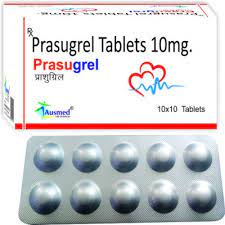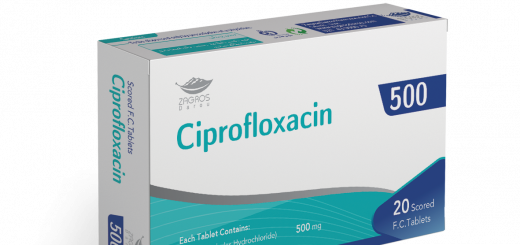What is prasugrel?
Prasugrel

Generic Name: prasugrel (PRA soo grel) Brand Names: Effient
What is prasugrel?
Prasugrel keeps the platelets in your blood from coagulating (clotting) to prevent unwanted blood clots that can occur with certain heart or blood vessel conditions.
Prasugrel is used to prevent blood clots in people with acute coronary syndrome who are undergoing a procedure after a recent heart attack or stroke, and in people with certain disorders of the heart or blood vessels.
Prasugrel may also be used for other purposes not listed in this medication guide.
What is the most important information I should know about prasugrel?
Prasugrel keeps your blood from coagulating (clotting) to prevent unwanted blood clots that can occur with certain heart or blood vessel conditions. Because of this drug action, prasugrel can make it easier for you to bleed, even from a minor injury. Contact your doctor or seek emergency medical attention if you have bleeding that will not stop.
You may also have bleeding on the inside of your body, such as in your stomach or intestines. Call your doctor at once if you have black or bloody stools, or if you cough up blood or vomit that looks like coffee grounds. These could be signs of bleeding in your digestive tract. If you need to have any type of surgery or dental work, tell the surgeon or dentist ahead of time that you are using prasugrel. You may need to stop using the medicine for at least 7 days before surgery to prevent excessive bleeding.
While you are taking prasugrel, do not take NSAIDs (non-steroidal anti-inflammatory drugs) without your doctor’s advice. NSAIDs include ibuprofen (Motrin, Advil), naproxen (Aleve, Naprosyn), diclofenac (Voltaren), diflunisal (Dolobid), etodolac (Lodine), flurbiprofen (Ansaid), indomethacin (Indocin), ketoprofen (Orudis), ketorolac (Toradol), mefenamic acid (Ponstel), meloxicam (Mobic), nabumetone (Relafen), piroxicam (Feldene), and others.
What should I discuss with my healthcare provider before taking prasugrel?

Do not use this medication if you are allergic to prasugrel, or if you have any active bleeding such as a stomach ulcer or bleeding in the brain (such as from a head injury), or a history of stroke, including TIA (“mini-stroke”).
If you have any of these other conditions, you may need a dose adjustment or special tests to safely take this medication:
- a bleeding or blood clotting disorder, such as hemophilia;
- a stomach ulcer;
- severe liver disease; or
- just before or after heart bypass surgery (coronary artery bypass graft, or CABG).
FDA pregnancy category B. This medication is not expected to be harmful to an unborn baby. Tell your doctor if you are pregnant or plan to become pregnant during treatment. It is not known whether prasugrel passes into breast milk or if it could harm a nursing baby. Do not use this medication without telling your doctor if you are breast-feeding a baby.
How should I take prasugrel?
Take this medication exactly as it was prescribed for you. Do not take the medication in larger amounts, or take it for longer than recommended by your doctor. Follow the directions on your prescription label.
Take this medication with a full glass of water.
Prasugrel can be taken with or without food.
Do not crush or break a prasugrel tablet. Swallow the pill whole.
Because prasugrel keeps your blood from coagulating (clotting) to prevent unwanted blood clots, it can also make it easier for you to bleed, even from a minor injury. Contact your doctor or seek emergency medical attention if you have bleeding that will not stop.
You may also have bleeding on the inside of your body, such as in your stomach or intestines. Call your doctor at once if you feel very weak or dizzy, or if you have black or bloody stools, or if you cough up blood or vomit that looks like coffee grounds. These could be signs of bleeding in your digestive tract.
If you need to have any type of surgery or dental work, tell the surgeon or dentist ahead of time that you are using prasugrel. You may need to stop using the medicine for at least 7 days before surgery to prevent excessive bleeding.
Do not stop taking this medication without first talking to your doctor. Stopping suddenly may make your condition worse. Store prasugrel at room temperature away from moisture and heat. Keep the tablets in their original container, along with the packet of moisture-absorbing preservative that comes with prasugrel tablets.
What happens if I miss a dose?
Take the missed dose as soon as you remember. If it is almost time for your next dose, skip the missed dose and take the medicine at your next regularly scheduled time. Do not take extra medicine to make up the missed dose.
What happens if I overdose?
Seek emergency medical attention if you think you have used too much of this medicine.
Overdose symptoms may include vomiting, feeling exhausted or short of breath, blurred vision, watery eyes, trouble walking, and blood in your stools or vomit.
What should I avoid while taking prasugrel?
While you are taking prasugrel, do not take NSAIDs (non-steroidal anti-inflammatory drugs) without your doctor’s advice. NSAIDs include ibuprofen (Motrin, Advil), naproxen (Aleve, Naprosyn), diclofenac (Voltaren), diflunisal (Dolobid), etodolac (Lodine), flurbiprofen (Ansaid), indomethacin (Indocin), ketoprofen (Orudis), ketorolac (Toradol), mefenamic acid (Ponstel), meloxicam (Mobic), nabumetone (Relafen), piroxicam (Feldene), and others. Avoid activities that may increase your risk of bleeding or injury. Use extra care to prevent bleeding while shaving or brushing your teeth.
Prasugrel side effects
Get emergency medical help if you have any of these signs of an allergic reaction: hives; difficulty breathing; swelling of your face, lips, tongue, or throat. Call your doctor at once if you have any of these serious side effects: unusual bleeding such as nosebleeds, bleeding gums, or any bleeding that will not stop;
- pale skin, fever, easy bruising, purple or red spots under your skin;
- jaundice (yellowing of the skin or eyes);
- unexpected vaginal bleeding;
- feeling very weak or dizzy;
- blood in your urine or stools, black or tarry stools;
- coughing up blood or vomit that looks like coffee grounds;
- chest pain or heavy feeling, pain spreading to the arm or shoulder, nausea, sweating, general ill feeling;
- sudden numbness or weakness, especially on one side of the body; or
- sudden headache, confusion, problems with vision, speech, or balance.
Less serious side effects may include:
- mild headache or dizziness;
- back pain, minor chest pain;
- cough;
- nausea; or
- tired feeling.
This is not a complete list of side effects and others may occur. Call your doctor for medical advice about side effects. You may report side effects to FDA at 1-800-FDA-1088.
Usual Adult Dose for Acute Coronary Syndrome:
Initiate treatment as a single 60 mg oral loading dose and then continue at 10 mg orally once daily. Patients should also take aspirin (75 mg to 325 mg) daily.
Usual Geriatric Dose for Acute Coronary Syndrome:
Prasugrel is generally not recommended in patients 75 years of age or older, except in high-risk situations (diabetes mellitus or prior MI) where its effect appears to be greater and its use may be considered.
What other drugs will affect prasugrel?
Before taking prasugrel, tell your doctor if you are taking a blood thinner such as warfarin (Coumadin).
This list is not complete and there may be other drugs that can interact with prasugrel. Tell your doctor about all the prescription and over-the-counter medications you use. This includes vitamins, minerals, herbal products, and drugs prescribed by other doctors. Do not start using a new medication without telling your doctor.







